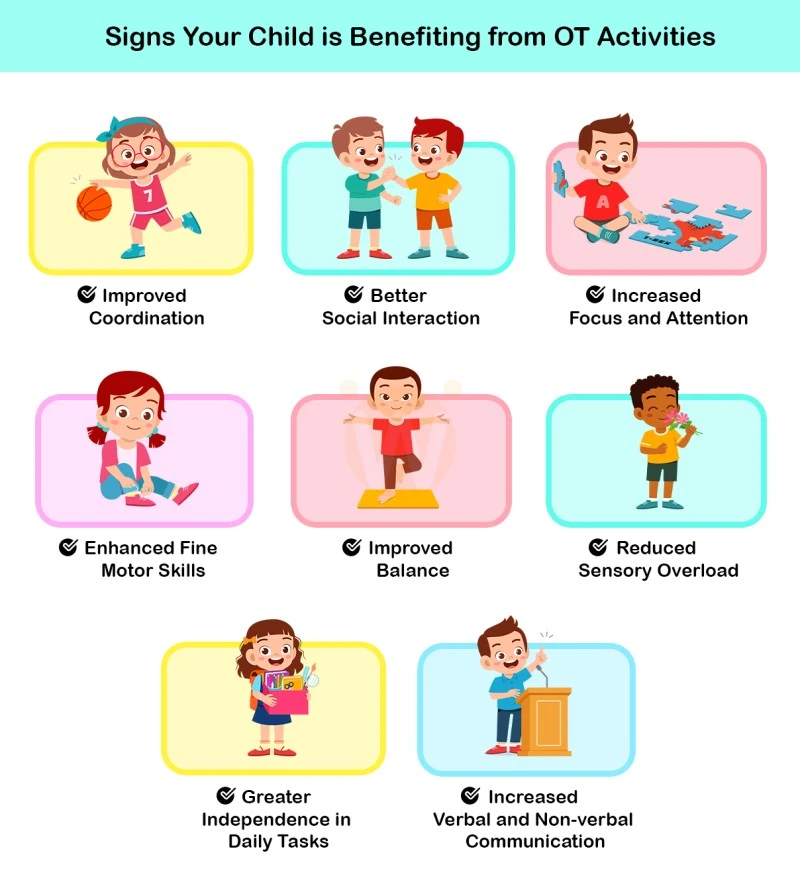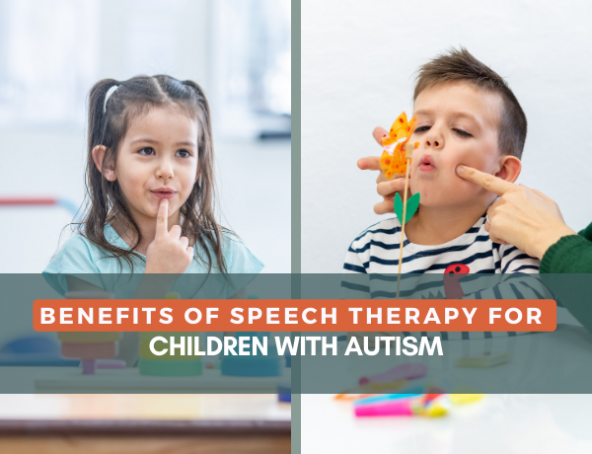Are you searching for ways to support your child’s communication skills? If your child is on the autism spectrum, you might be exploring different options to help them express themselves more effectively.
Speech therapy can be a transformative tool in unlocking your child’s potential, and engaging activities are key to making this journey enjoyable and effective. Imagine the joy of seeing your child communicate with confidence, understanding, and creativity. This guide will introduce you to engaging activities tailored for autistic children, designed to enhance their speech therapy experience.
Let’s explore these strategies together and discover how you can empower your child to thrive in their communication journey.
Speech Therapy Benefits
Engaging speech therapy activities can help autistic children improve communication skills. These activities often include interactive games, storytelling, and role-playing. They encourage verbal expression, enhance understanding, and promote social interaction in a fun and supportive environment.
Speech therapy can be a game-changer for autistic children. It offers a structured way to improve communication skills, which can enhance their ability to express needs and emotions. This process not only aids in speech development but also boosts confidence and social interaction.
Improved Communication Skills
Speech therapy focuses on helping children articulate words clearly. This can make conversations smoother and more enjoyable. When your child can express themselves, they are less likely to feel frustrated and isolated.
Enhanced Social Interaction
Through engaging activities, speech therapy encourages children to interact with peers. Group sessions can be particularly beneficial, offering a safe space to practice social skills. You might notice your child showing more interest in group play and school activities.
Increased Confidence
As children learn to communicate effectively, their confidence grows. They begin to initiate conversations and share ideas. This newfound confidence can spill over into other areas of life, leading to more independence.
Tailored Learning Approaches
Every autistic child is unique, and speech therapy recognizes this by tailoring strategies to individual needs. If your child learns best through play, therapists might use games to teach new words. This personalized approach ensures that therapy is both effective and enjoyable. Speech therapy often involves parents in the process, offering you insights into your child’s progress. You’ll learn techniques to practice at home, reinforcing what is learned in sessions. This collaboration can strengthen your bond with your child and support their development. Have you ever considered how empowering it is for a child to communicate their thoughts? Speech therapy can be the key to unlocking this essential skill.
Tailored Activities
Tailored activities in speech therapy cater to the unique needs of autistic children. Each child has a distinct way of learning and expressing themselves. Activities must be customized to suit their individual preferences and abilities. This personalized approach makes learning enjoyable and effective.
Interactive Games
Interactive games engage children in a fun way. Games like “Simon Says” teach following directions. “Guess the Sound” helps with auditory recognition. These games encourage participation and communication. Children learn while playing, which boosts their confidence. Games can be adapted to match each child’s skill level.
Storytelling Techniques
Storytelling techniques help develop speech and language skills. Using picture books, children can describe images. This encourages them to use new words. Role-playing stories lets them act out characters. This enhances their creativity and expression. Simple stories with familiar themes work best. They help children relate to the content and engage more deeply.
Visual Aids
Visual aids are powerful tools in speech therapy for autistic children. They offer a tangible way to communicate, helping bridge gaps that words alone might not cover. As someone who has seen the transformative impact of visual aids firsthand, I can attest to their ability to make learning fun and engaging.
Flashcards
Flashcards are like a secret weapon in your speech therapy toolkit. They are simple yet versatile. You can use them to teach vocabulary, emotions, or even daily routines. The key is to keep them colorful and relatable. For example, using flashcards with pictures of everyday items can spark recognition and conversation. Do your flashcards ignite excitement or feel like a chore?
Picture Books
Picture books are not just bedtime stories; they are gateways to imagination and learning. They provide context and stimulate discussion. Choose books with vivid illustrations and simple text. This makes it easier for the child to connect words with images. Have you ever seen a child light up when they recognize a character or scene from a book? It’s a magical moment that fosters communication and understanding.
Technology Integration
Technology has transformed how speech therapy is delivered to autistic children. Integrating digital tools into therapy can enhance engagement and learning. These tools offer personalized experiences that cater to individual needs. Technology provides diverse methods for practice and reinforcement. This makes speech therapy more accessible and effective.
Speech Therapy Apps
Speech therapy apps are valuable tools for autistic children. They offer interactive exercises that make learning fun and engaging. These apps provide a range of activities for different skill levels. Children can practice at their own pace, building confidence over time. Many apps use visuals and sounds to keep children interested. This interactive format helps maintain focus during sessions.
Video Modeling
Video modeling is another effective technique in speech therapy. It involves showing videos of desired behaviors or skills. Children learn by observing and imitating these actions. This method can be especially helpful for visual learners. Video modeling breaks down complex tasks into manageable steps. It offers a clear example for children to follow. Parents and therapists can create personalized videos, too.
Music And Rhymes
Music and rhymes can be powerful tools in speech therapy for autistic children. They provide a fun and engaging way to improve communication skills. The rhythmic patterns make it easier for children to remember and mimic sounds. This helps in developing their language abilities.
Benefits Of Music In Speech Therapy
Music creates a joyful environment that motivates children to participate. The melody can capture their attention and encourage interaction. Songs with repetitive lyrics help in building vocabulary. Children find it easier to recall words through songs. Music also helps in enhancing listening skills.
Using Rhymes For Language Development
Rhymes are simple and catchy, making them ideal for learning. They allow children to practice pronunciation without pressure. Repeating rhymes aids in memorization and boosts confidence. Rhymes can improve the understanding of syllables and sound patterns. This can make speech development more effective.
Interactive Music Activities
Incorporate hand movements or dance with songs. This adds a physical element that enhances learning. Use instruments like drums or shakers to keep children engaged. Encourage them to tap along with the beat. This helps in synchronizing speech with rhythm.
Creating A Musical Environment
Set up a space where music is accessible. Include a variety of musical genres for exploration. Play music during activities to maintain interest. Create playlists of favorite songs and rhymes. Children can choose what to listen to, promoting autonomy.
Integrating Technology In Music Therapy
Use apps that feature music and rhymes designed for learning. They offer interactive experiences that are engaging for children. Tablets or smart devices can be used to play music. Children can follow along, tapping screens to match rhythms. Technology can make music therapy more engaging.

Credit: lighthouseautismcenter.com
Role Play Activities
Role play activities enhance speech therapy for autistic children by encouraging communication and social skills. These activities provide a safe space to practice language in real-life scenarios, boosting confidence and interaction. Through imaginative play, children learn to express themselves and understand others better.
Role play activities can significantly aid speech therapy for autistic children. They provide a fun and engaging way to practice communication skills. These activities encourage children to express themselves in various scenarios. Through role play, children can build confidence in speaking. They also learn to understand social cues and develop empathy.
Understanding Role Play’s Impact On Speech Development
Role play helps children learn to articulate words better. By mimicking real-life situations, they improve their language skills. It provides a safe space for them to practice speaking. Children can explore different roles, enhancing their vocabulary. This activity also aids in understanding context and tone.
Popular Role Play Scenarios For Autistic Children
Simple scenarios like playing house or shop are effective. These settings are familiar and easy to understand. They allow children to practice common phrases and conversations. Dressing up as different characters can also spark creativity. It encourages them to use new words and expressions.
Benefits Of Role Play In Social Skill Development
Role play enhances social interactions by simulating real-world encounters. Children learn to take turns and listen to others. They practice maintaining eye contact and responding appropriately. These skills are crucial for effective communication. It helps them in building friendships and understanding emotions.
Tips For Successful Role Play Activities
Start with simple scenarios that match the child’s interests. Use props to make the activity more engaging. Encourage the child to express their thoughts and feelings. Provide positive feedback to boost their confidence. Be patient and allow them to lead the play when possible.
Sensory Play
Sensory play enhances speech therapy for autistic children by engaging multiple senses. Activities such as squishy toys, sand play, and musical instruments can boost communication skills. Hands-on experiences make learning fun and help children express themselves better.
Sensory play is a powerful tool in speech therapy for autistic children. It offers a multisensory experience that can enhance their communication skills. By engaging different senses, sensory play can help children better understand and express themselves.
Understanding Sensory Play
Sensory play involves activities that stimulate a child’s senses. This can include touch, smell, sight, sound, and even taste. These activities are not only enjoyable but also create pathways in the brain that help with speech development.
Benefits Of Sensory Play
Sensory play can boost language skills by encouraging children to describe their experiences. You might notice your child using more words when touching different textures or identifying colors. This engagement can lead to more meaningful interactions and conversations.
Simple Sensory Activities
Consider activities like playing with sand or water. These can be both calming and engaging for your child. You can also create a sensory bin with rice or beans, allowing your child to explore different sensations with their hands.
Incorporating Speech Goals
Use sensory play to work on specific speech goals. If your child is working on articulation, encourage them to describe what they feel. Prompt them to use new words or phrases during play. This can make learning feel less like a chore and more like fun.
Personal Experience With Sensory Play
I remember watching my nephew light up while playing with colored rice. His excitement made him more talkative, using words he had never said before. This taught me that sensory play can unlock potential in unexpected ways.
Engaging Your Child’s Interests
Focus on what your child loves. If they enjoy music, try activities that include sounds or rhythms. Tailoring sensory play to their interests can make them more willing to participate and communicate. How can you make sensory play a part of your child’s daily routine? Consider integrating sensory activities into everyday tasks. This not only aids speech development but also strengthens your bond with your child through shared experiences.

Credit: www.mywellnesshub.in
Parental Involvement
Parental involvement is key in speech therapy for autistic children. Engaging parents in their child’s therapy journey supports progress. It builds a strong foundation for communication skills. Parents play a crucial role in reinforcing therapy at home. They become co-therapists, helping their child practice and grow.
Home Practice
Home practice is vital for speech development. Parents can create a supportive environment. Simple activities like reading books aloud help. Use everyday moments to encourage speech. Cooking together offers chances to name ingredients. Playing with toys can spark conversations. Consistent practice strengthens communication skills.
Collaboration With Therapists
Collaboration with therapists enhances therapy outcomes. Regular communication keeps parents informed. Share observations about progress and challenges. Therapists provide strategies for home practice. Parents can ask questions to clarify techniques. Working together creates a unified approach. This teamwork benefits the child’s speech journey.
Monitoring Progress
Progress tracking in speech therapy activities for autistic children is crucial. It helps identify improvements and areas needing attention. Regular assessments ensure the therapy aligns with each child’s unique needs, fostering effective communication skills.
Monitoring progress in speech therapy for autistic children is crucial. It helps you understand what’s working and what needs adjustment. Keeping track ensures that the therapy remains effective and tailored to your child’s unique needs. It might feel overwhelming, but with the right tools and mindset, it becomes manageable and insightful. Are you giving your child the best chance at progress? Let’s explore how you can confidently monitor their journey. ###
Setting Clear Goals
Before you can monitor progress, you need clear goals. What specific areas of speech are you targeting? Is it pronunciation, vocabulary, or sentence structure? Discuss with your child’s therapist to outline achievable goals. This provides a roadmap and makes progress measurable. ###
Using Visual Aids
Visual aids are powerful in tracking progress. Charts and graphs can illustrate improvements over time. Create a simple progress chart at home. Include milestones like new words learned or successful conversations. Celebrate each achievement, no matter how small. ###
Regular Feedback Sessions
Consistent feedback is key. Schedule regular sessions with your child’s therapist to discuss progress. Ask questions: What are the positive changes observed? What challenges remain? Use these insights to adjust your strategy. ###
Involving Your Child
Involve your child in monitoring their progress. Use child-friendly tools like stickers or stars to mark achievements. This empowers them and makes progress tangible. Ask them how they feel about their progress. Their perspective can provide surprising insights. ###
Documenting Milestones
Keep a journal or digital record of milestones. Documenting allows you to see patterns and recognize growth. Note any breakthroughs or setbacks. This documentation can be a helpful reference during therapy sessions and helps in planning future goals. ###
Adapting Strategies As Needed
Be open to adapting strategies. What worked initially might need tweaking as your child grows. Stay flexible and responsive to changes in your child’s development. Regularly update goals and methods to match their evolving needs. ###
Engaging With Support Networks
Join support networks and communities. They can provide valuable advice and share experiences. Engage with other parents and professionals. Their stories can offer new perspectives and strategies. Are you ready to take an active role in your child’s speech therapy journey? By monitoring progress, you’re equipping yourself and your child with the tools for success.

Credit: azaunited.org
Frequently Asked Questions
What Activities Help Autistic Children Speak?
Encourage speech in autistic children through music therapy, interactive play, and visual aids. Use picture books and flashcards. Implement speech therapy sessions for structured guidance. Engage in storytelling and role-playing to stimulate verbal communication.
How Do You Help An Autistic Child With Speech Therapy?
Use visual aids and simple language to enhance understanding. Practice speech through games and interactive activities. Encourage communication with positive reinforcement. Tailor strategies to the child’s interests and needs. Collaborate with a licensed speech therapist for personalized guidance.
What Are Turn Taking Activities For Autism Speech Therapy?
Turn-taking activities for autism speech therapy include role-play games, storytelling, and interactive board games. These activities encourage communication and social skills development. Practicing turn-taking helps improve language abilities and fosters meaningful interactions. Use visual aids or timers to guide turns, ensuring structured and engaging therapy sessions.
What Is The Best Activity For An Autistic Child?
Engaging in sensory activities like playing with sensory bins or sand can be beneficial. These activities support sensory processing and promote relaxation. Tailor activities to the child’s interests for better engagement. Always consult with a professional for personalized recommendations.
Conclusion
Exploring speech therapy activities can greatly aid autistic children. Each child is unique and needs personalized support. Simple games and exercises often show the best results. Patience and understanding are key in this process. Celebrate small successes along the way.
Progress might be slow, but it’s rewarding. Consistency is essential for effective learning. Parents and therapists working together make a huge difference. Observe what engages the child most. Adapt activities to suit their interests. This keeps them motivated and focused.
Your efforts can create a positive impact. Continue exploring and supporting their communication journey.
